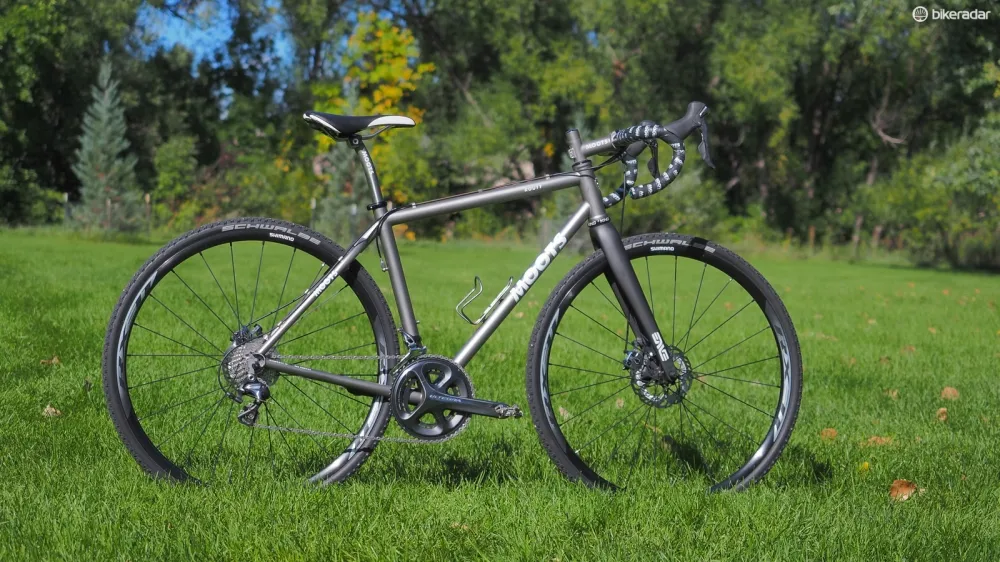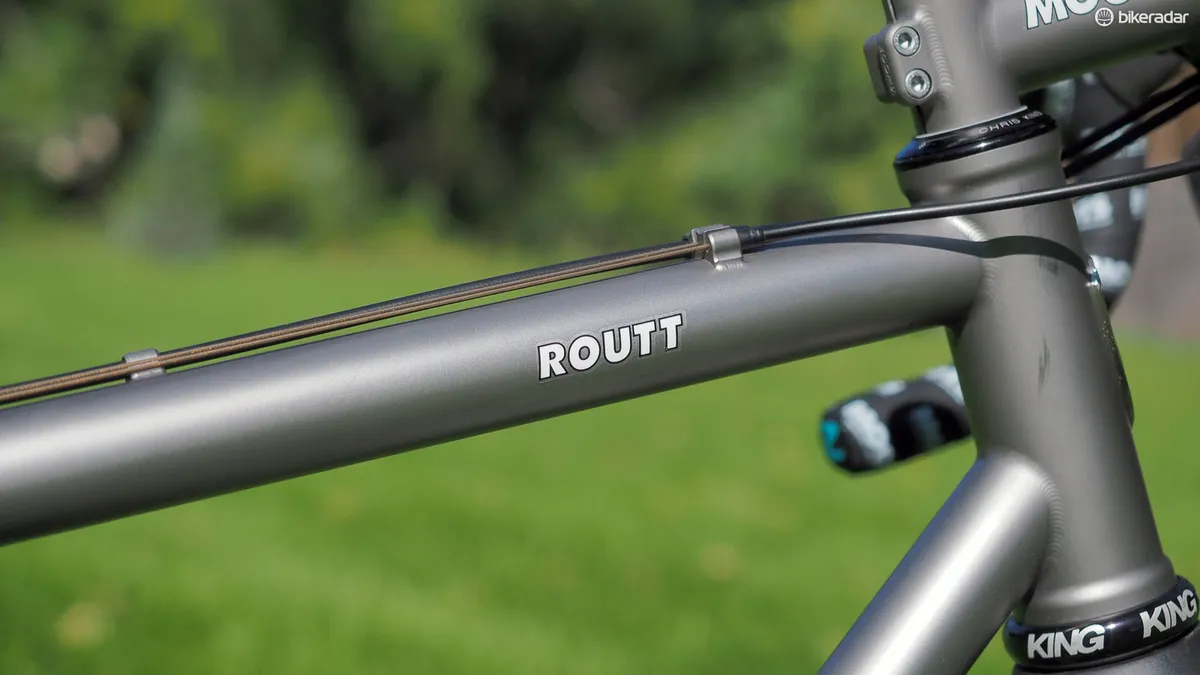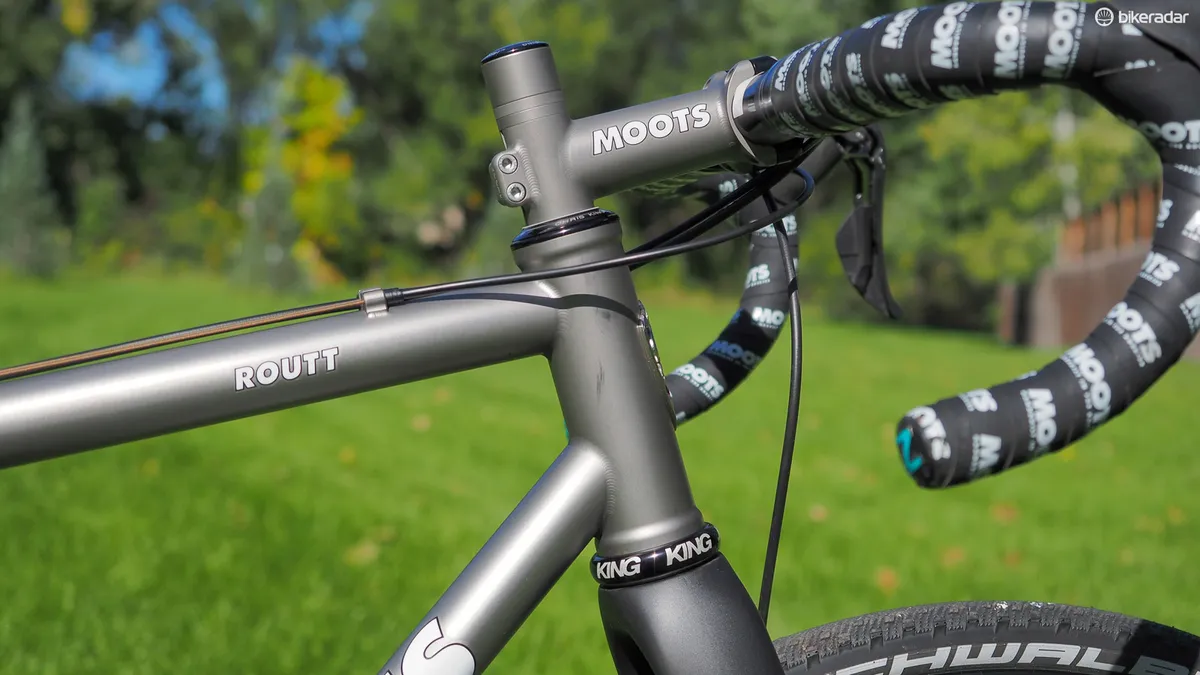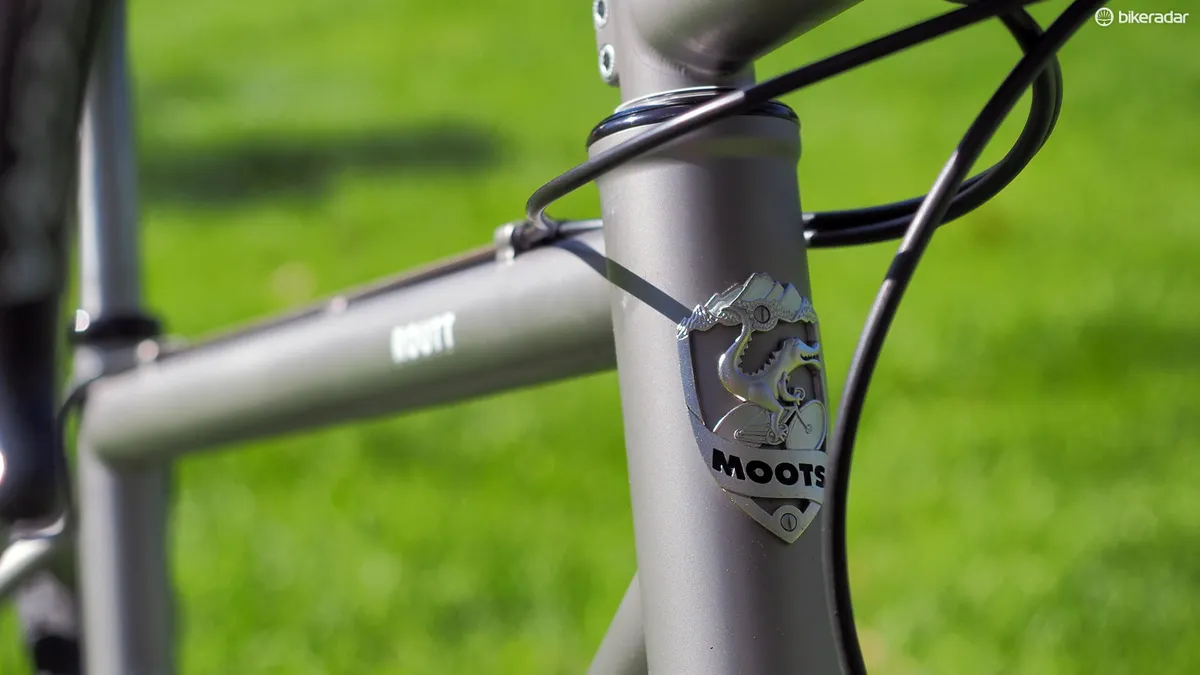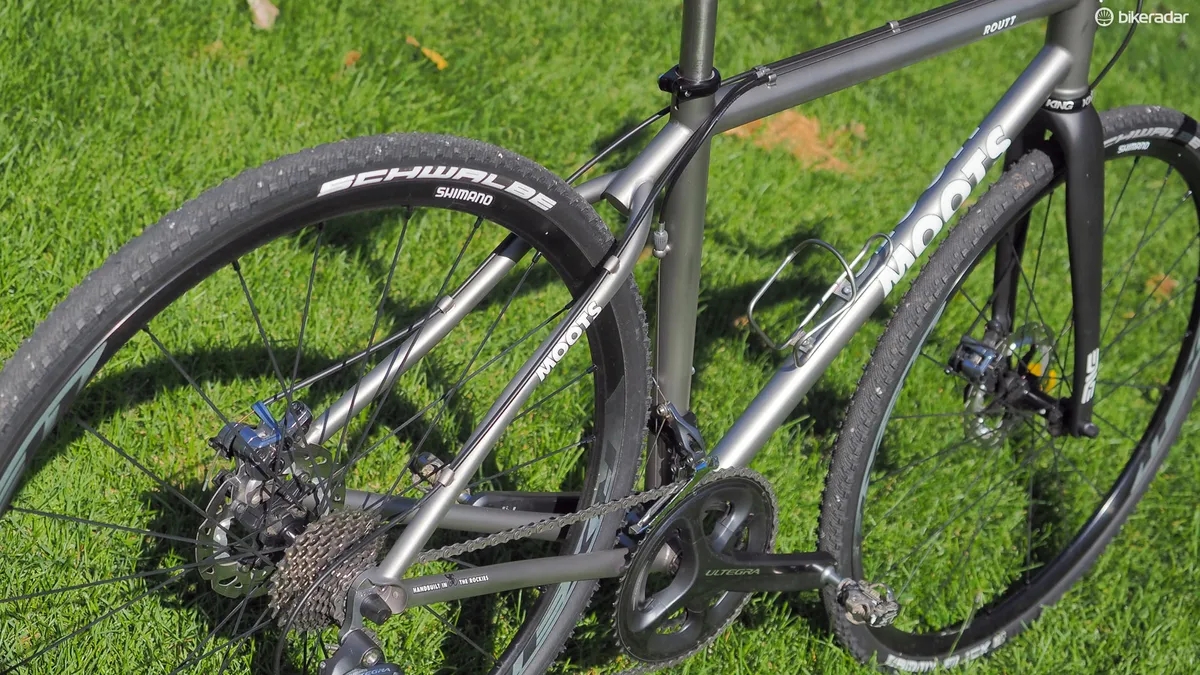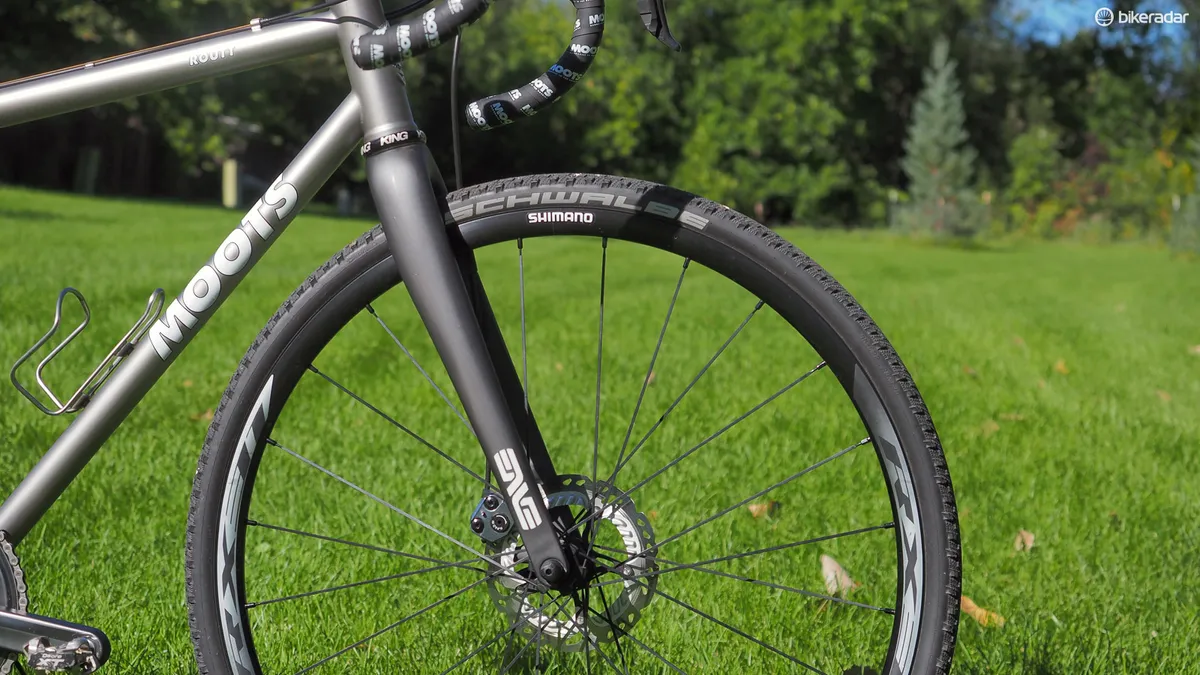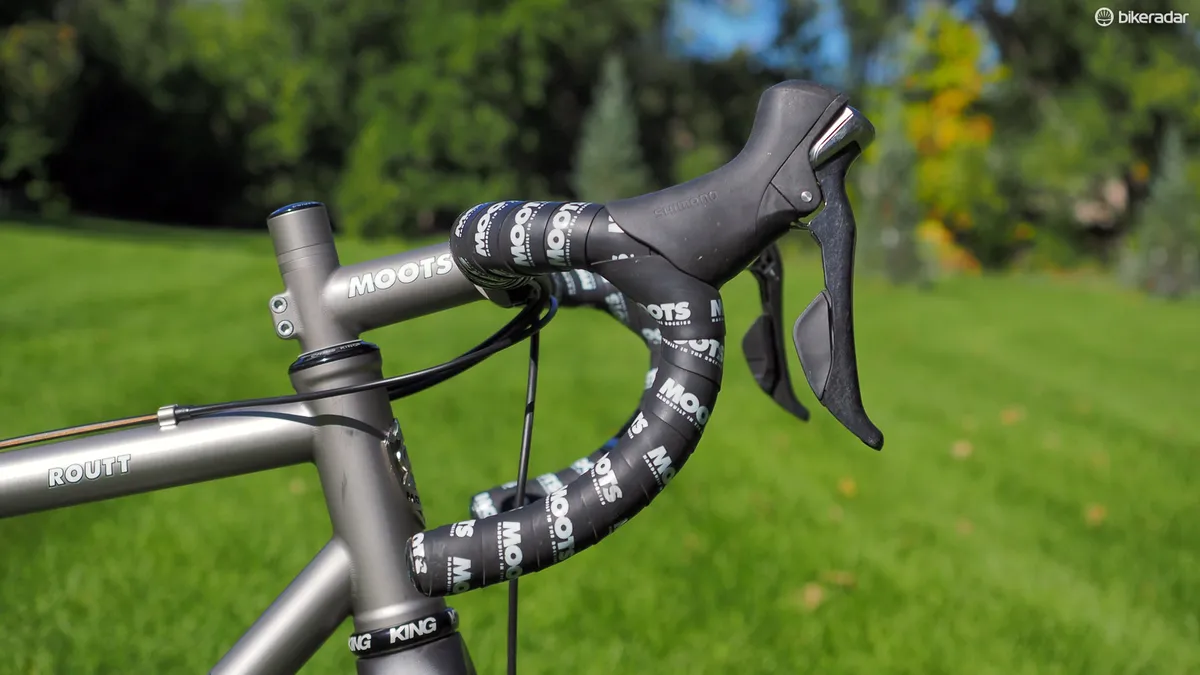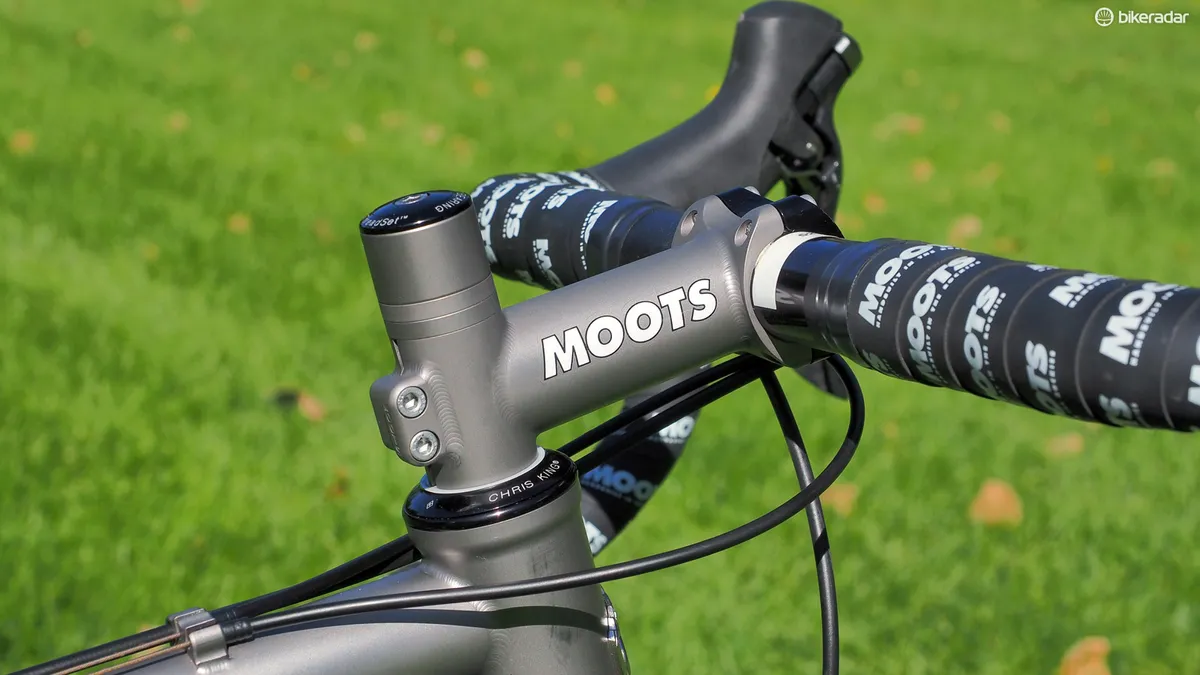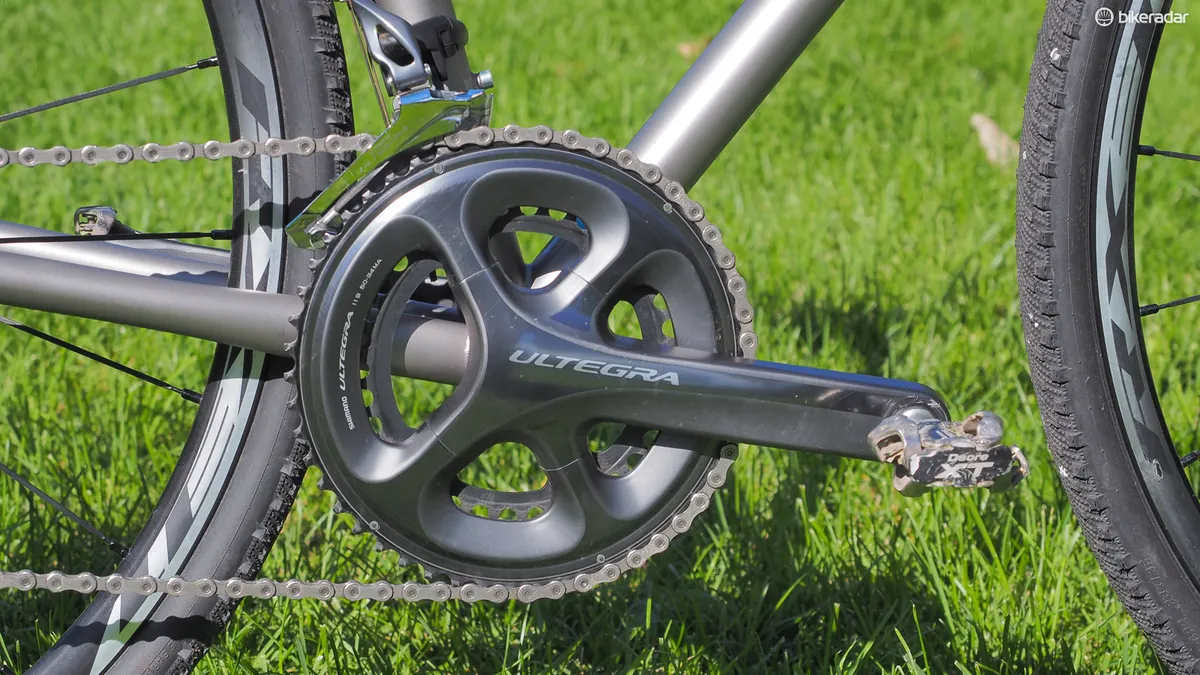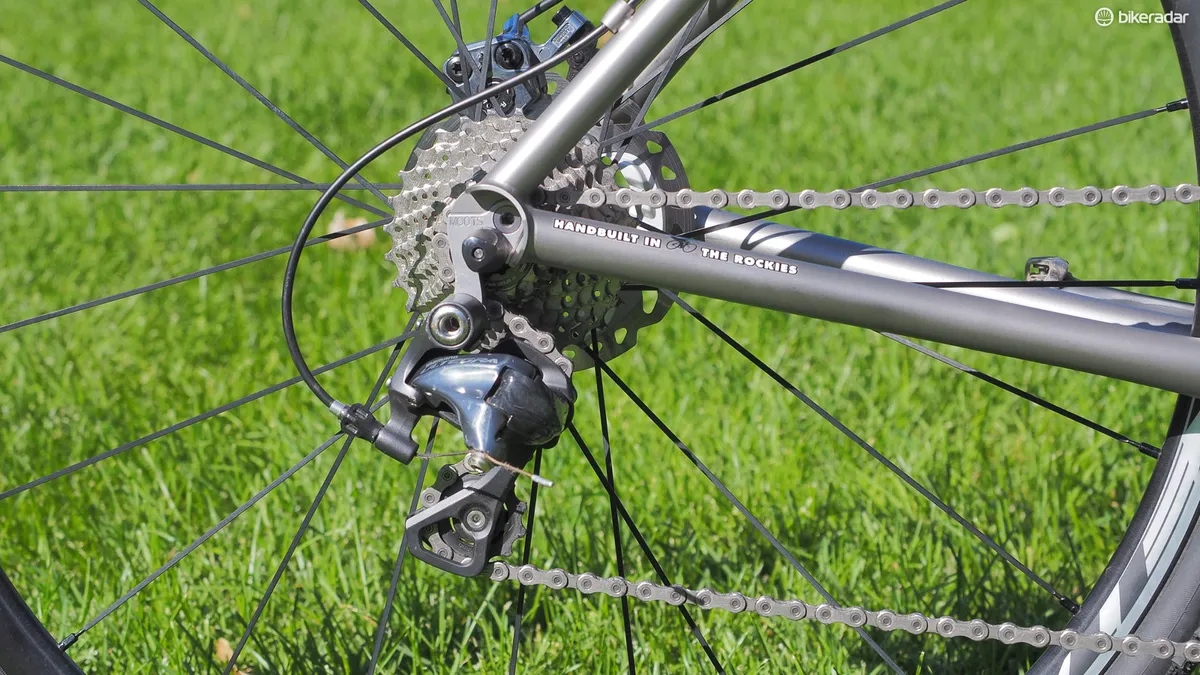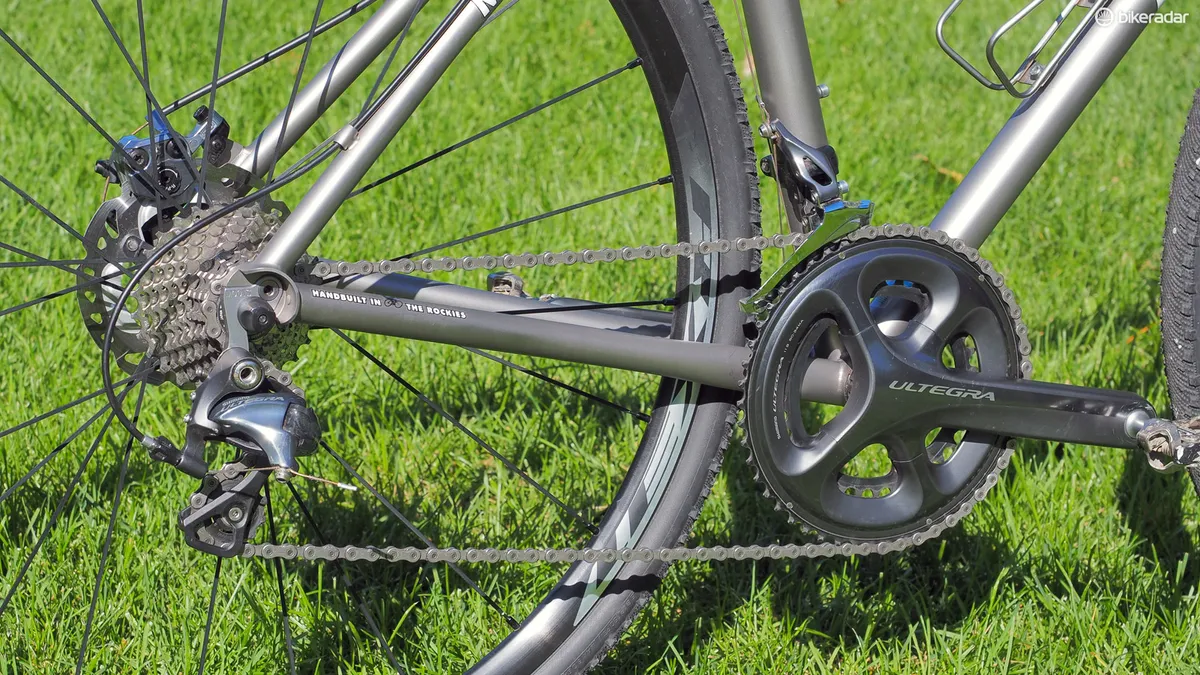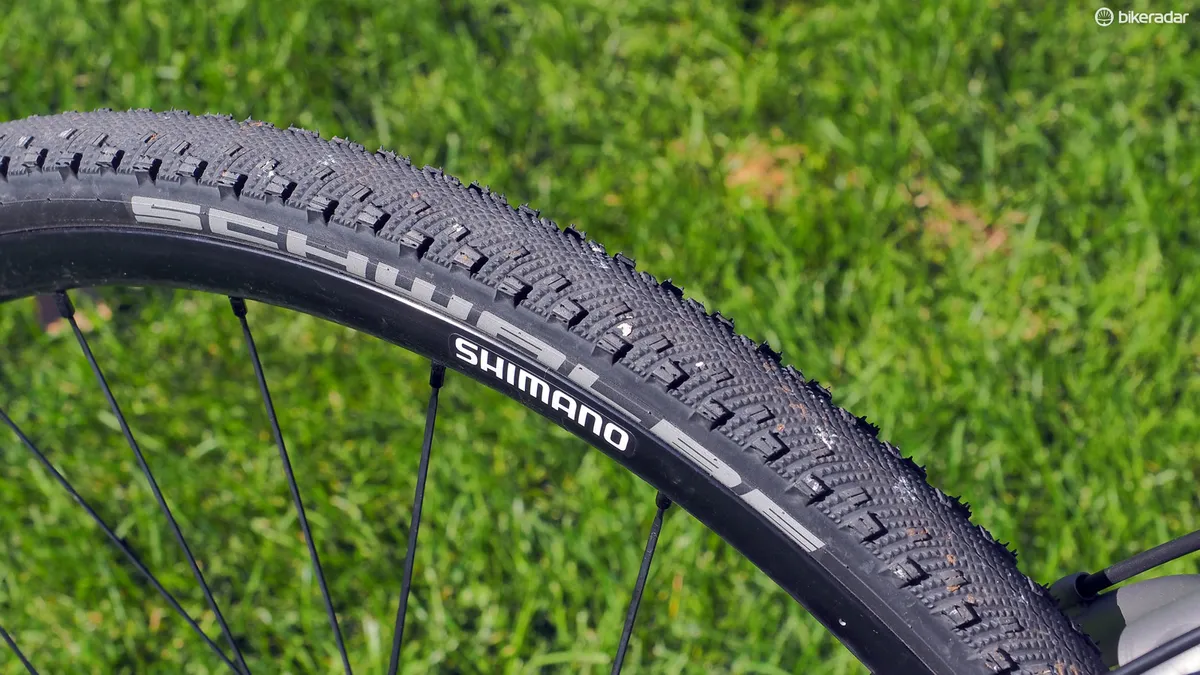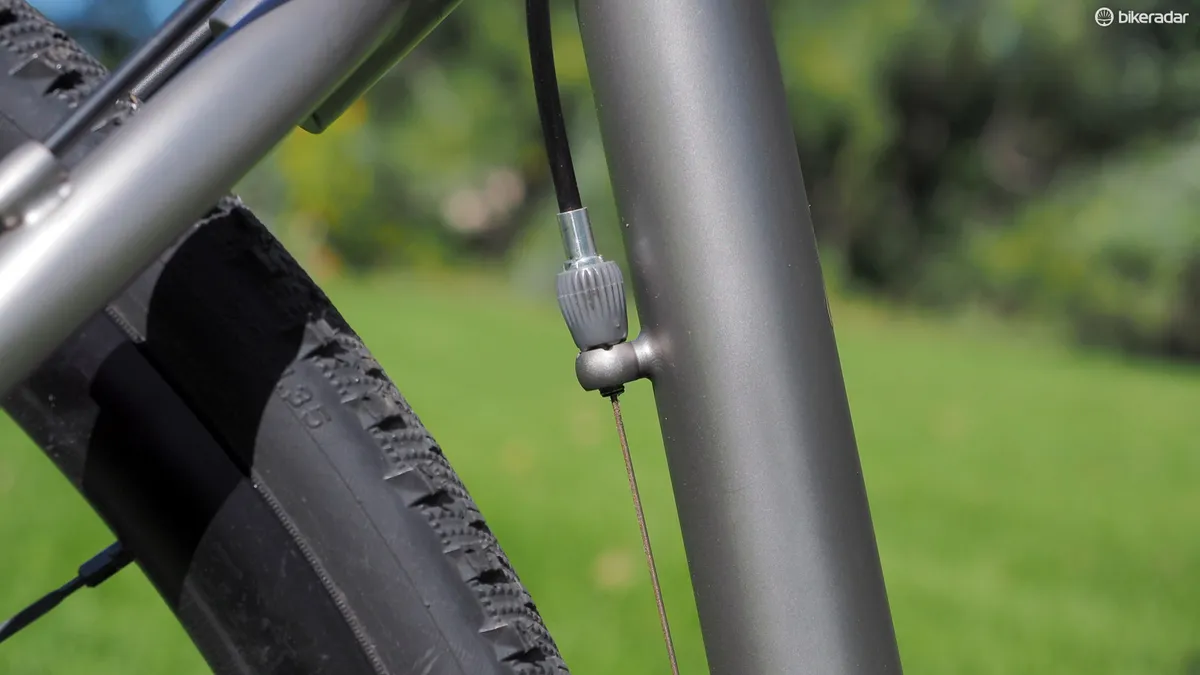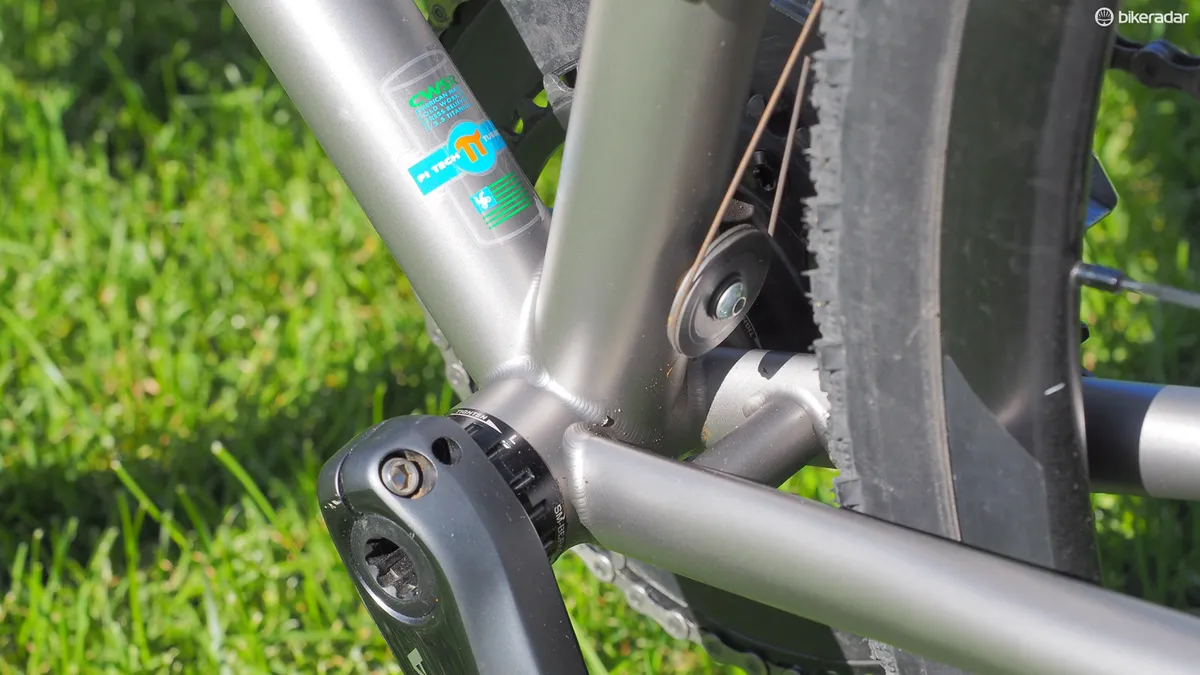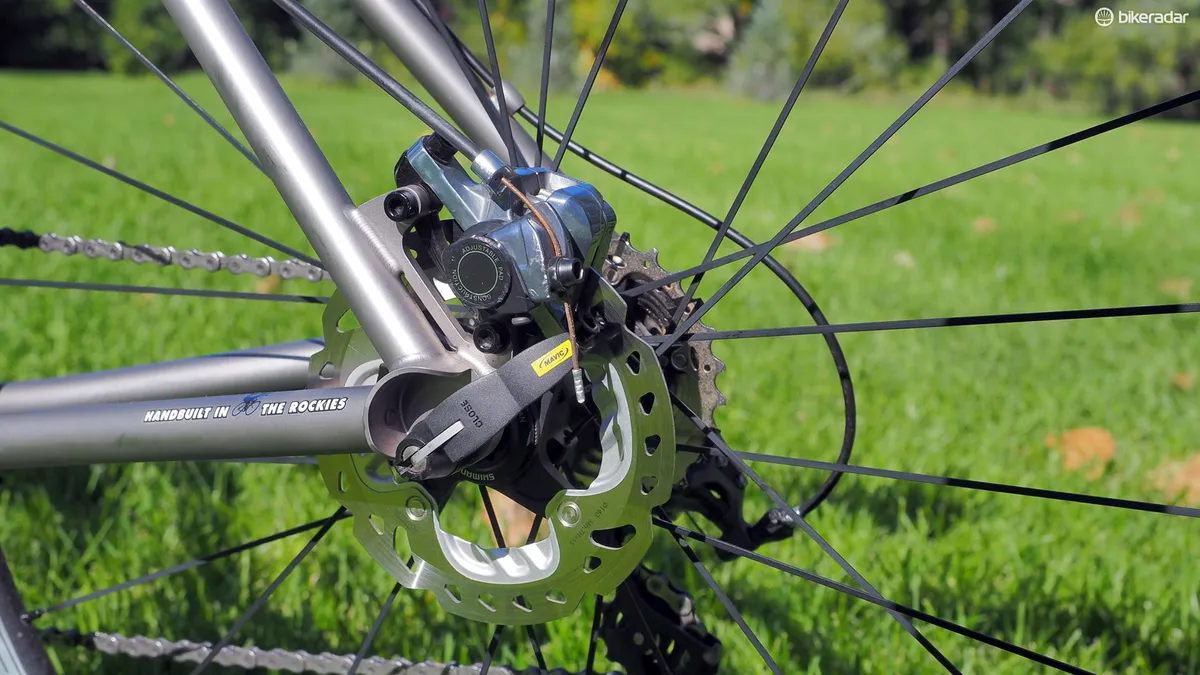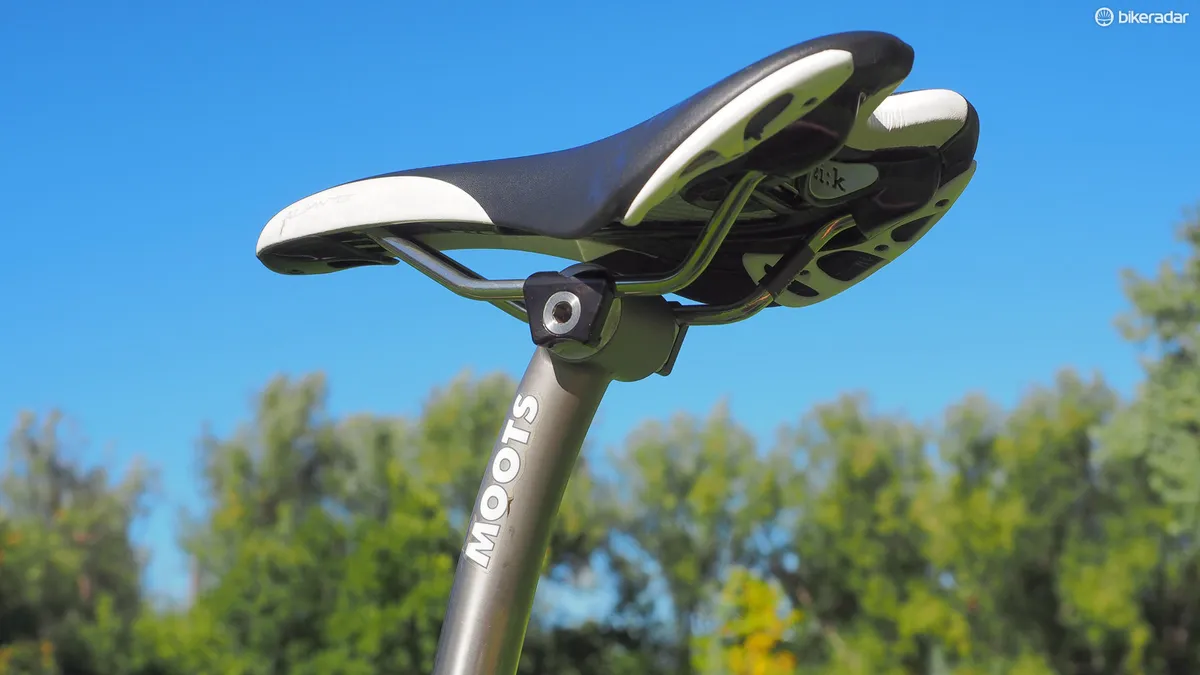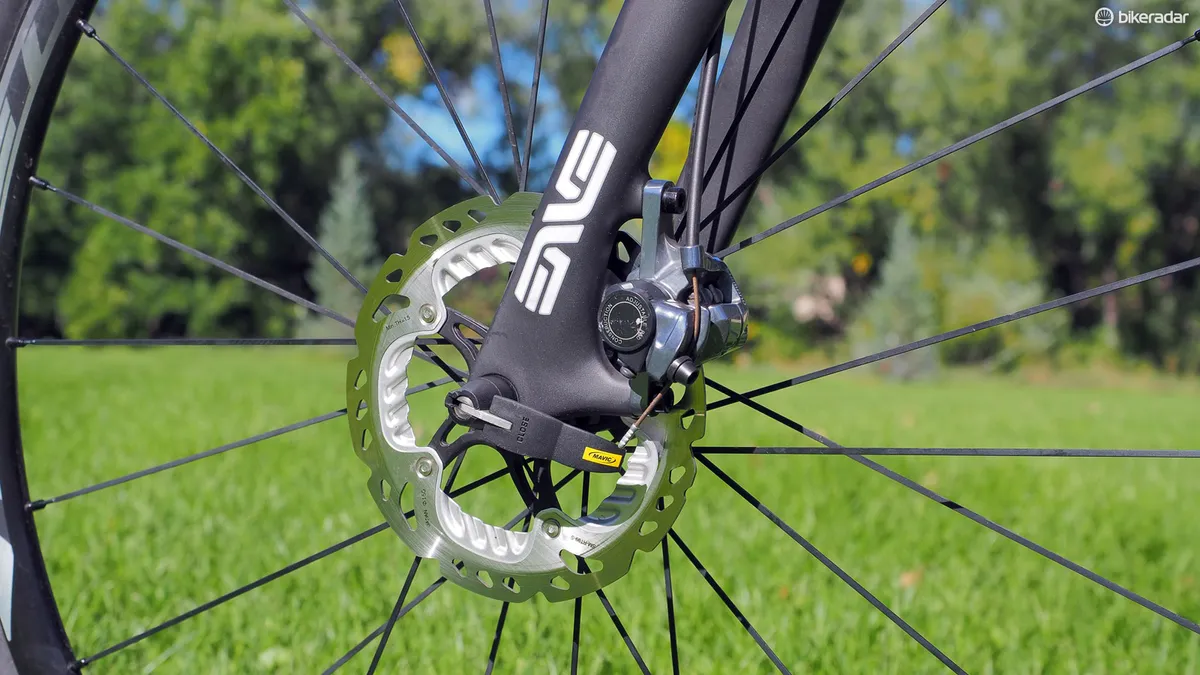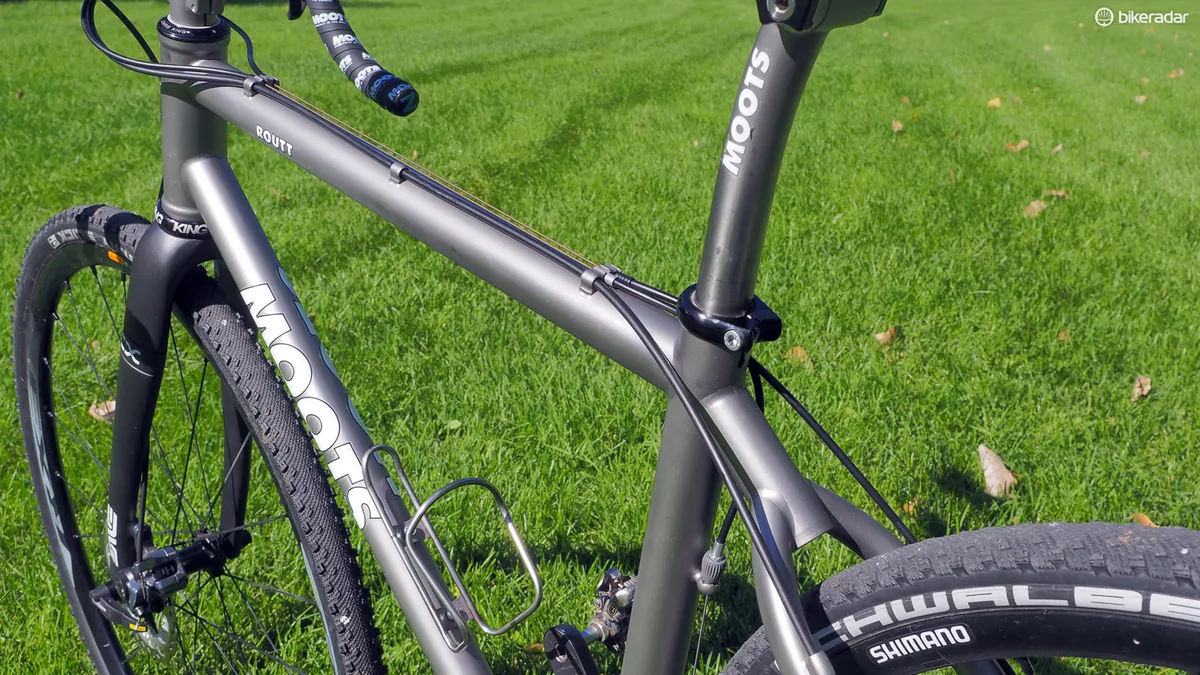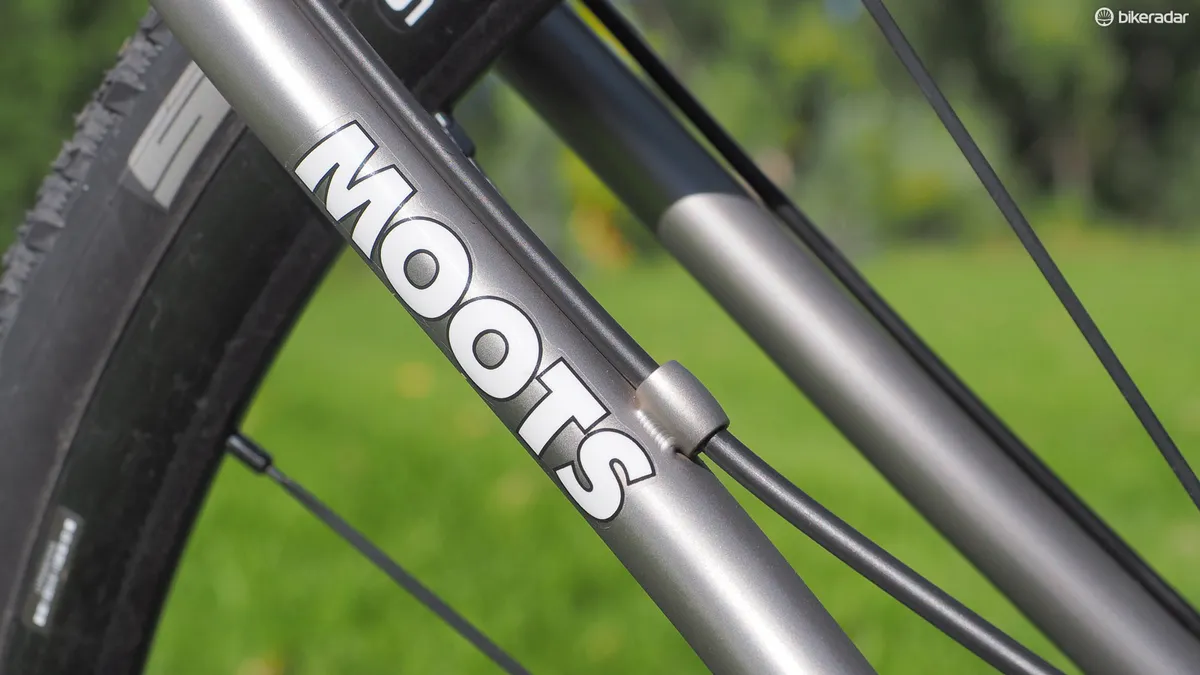The Moots Routt is a transformation of the company's titanium Psychlo-X workhorse, that's been created for 2015.
Moots acknowledge that many people who buy cyclocross bikes don't intend to use them for racing. so the geometry of the new Routt is more versatile and forgiving than a pure 'cross bike. This makes it more suited to backroads exploring, but if you do plan on hitting the barriers, you might be a little disappointed with it.
- Highs: Awesome build quality, solid-yet-comfortable ride, versatile geometry, timeless aesthetics
- Lows: Jack-of-all-trades geometry doesn't work as well for 'cross, relatively heavy and expensive
- Buy if: You're looking for a do-it-all road machine that'll last forever
Ride and handling: Distinctive titanium feel but languid handling for racing
Close your eyes while riding the Routt and there's no mistaking that titanium ride quality that's so often touted with that battleship-grey wonder-material. The frame isn't super stiff in the traditional sense (and we suspect that it wouldn't produce overly impressive numbers on a test bench) but it feels stout underfoot with a reassuringly solid backbone, outstanding feedback from the tires and a pleasantly springy and lively personality.
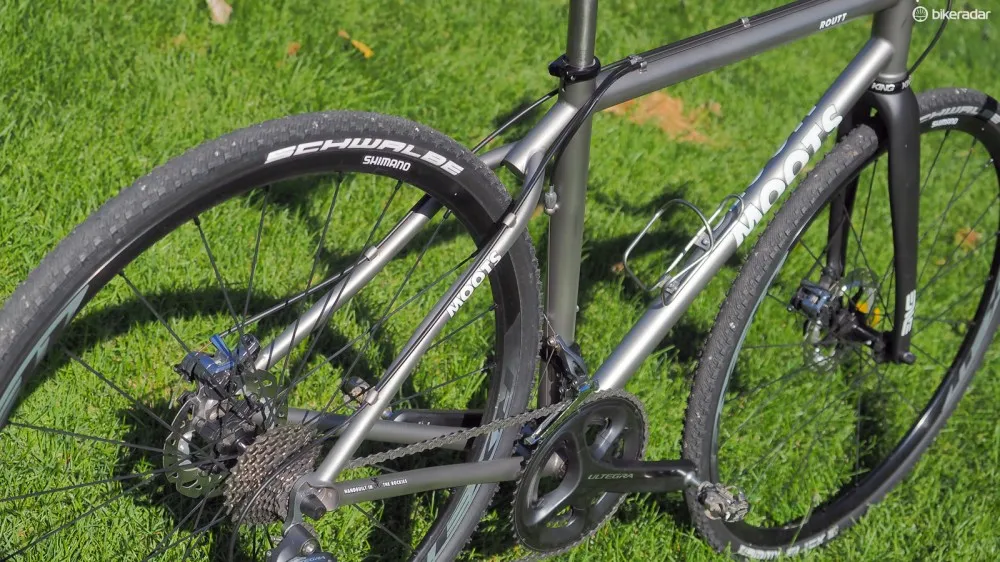
The frame design isn't groundbreaking, but the build quality is absolutely superb
Despite that vault-like feel, the Routt filters out high-frequency vibrations like a well-designed carbon fiber frame. Even more impressively, the comparatively generous flex is also adept at taking the edge off of bigger impacts, too.
Past experience with titanium frames suggests that the Routt should also be virtually indestructible, with far better impact resistance than carbon fiber frames. A raw finish like this one requires almost no care – and when it does eventually start look ratty, a Scotchbrite pad and some fresh decals are often all that's needed to get it looking new again.
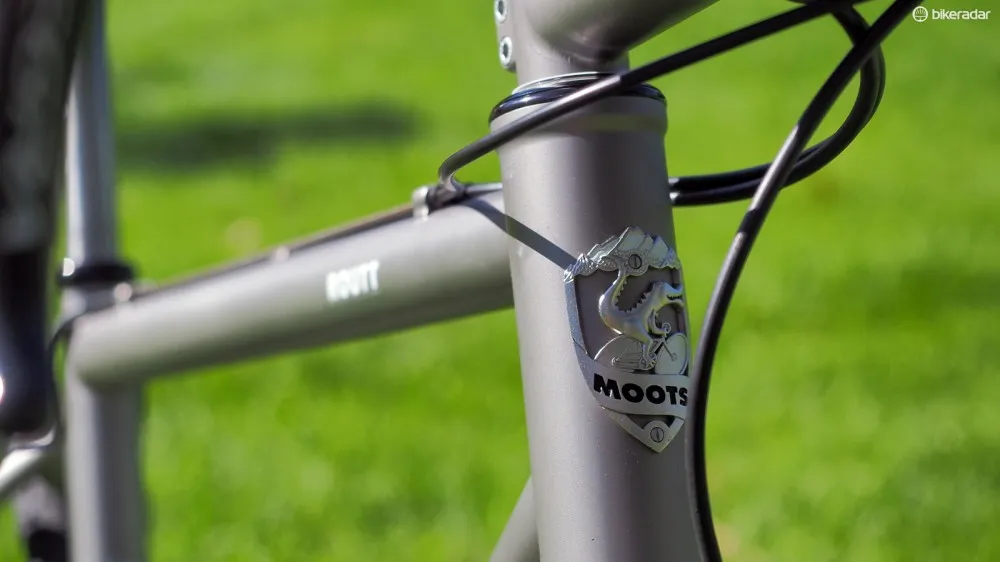
The raw finish is easy to care for
All of the above should make the Routt ideally suited to the rough-and-tumble world of cyclocross. At least, it would be if it weren't for the geometry changes that Moots instituted for this year.
Compared to the old Psychlo-X (and the current Psychlo-X RSL, which remains in the lineup), the Routt's bottom bracket is 8mm lower, the head tube is longer and has a slightly slacker angle, and the top tube is shorter. For our 52cm tester, the changes add up to a reach that's 11mm shorter than the old geometry and a stack that's a substantial 24mm higher.
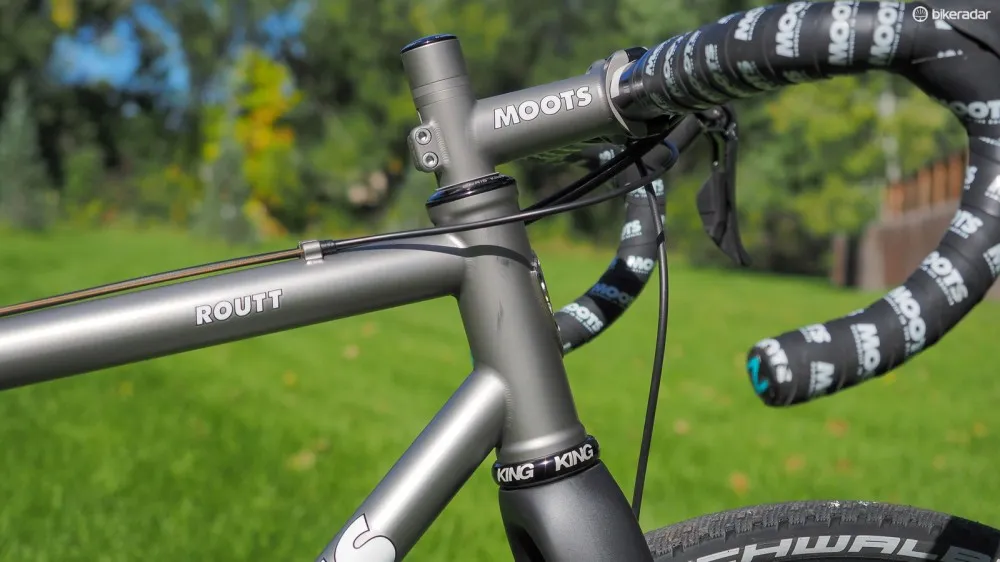
The new Routt is taller and slacker than the previous Psychlo X model, with a shorter cockpit
Moots certainly got the results it wanted from the subtle modifications. We found the Routt well suited to its newfound role of exploring lesser-used byways and generally taking the road less traveled. It's comfortable on a wide range of terrain, the relaxed positioning is easy to settle into for a long and casual day, and the handling is unflappably stable and confident.
But all of this detracts from the sharper reflexes and more aggressive personality that the Routt's forebear offered for cyclocross racing. In more demanding situations, we found the cockpit cramped and occasionally had difficulty getting enough weight over the front wheel given the tall head tube.
Moreover, the more sharply sloping top tube isn't as easy to wrest on to your shoulder for run-ups as a more open front triangle, nor is it as natural a grab for running barriers suitcase-style as something slightly more level.
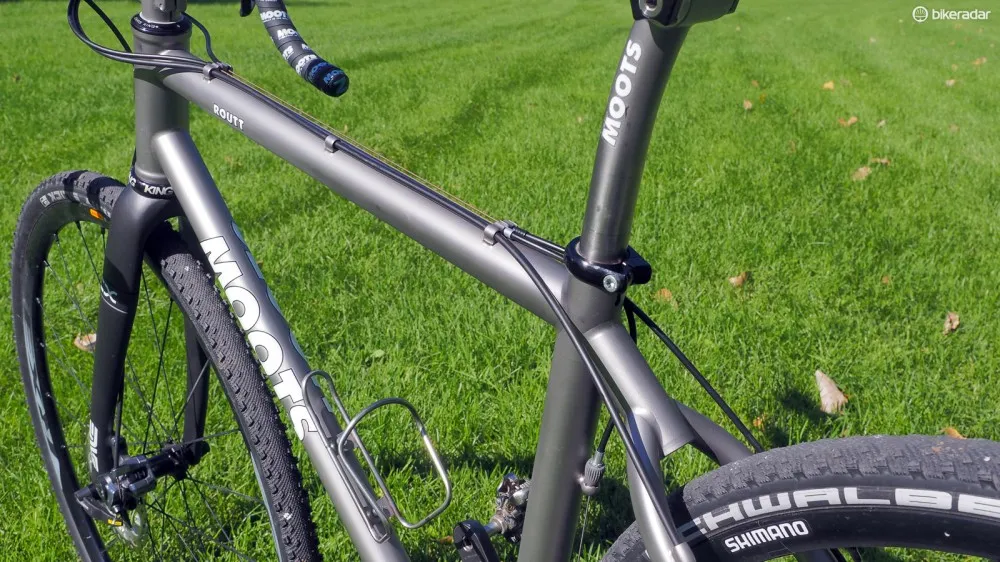
12 o'clock routing keeps the lines safe from tire spray
This isn't to say that the Routt isn't a good bike. It does its job as intended and does it well; you just need to make sure that that new job is the one you're actually looking for.
"We debated long and hard about moving the Routt to the geometry we have now," said Moots' marketing and social media man Jon Cariveau – who's also a hardcore 'cross racer. "Trust me; personally it pained me to make those changes, but we saw the [demand] growing and growing from customers. Customer and dealer feedback gave us the confidence to make that move.
"The feedback from those groups said that if they were going to go 'cross racing for real, they would plunk down for the [Psychlo X] RSL and get all the bells and whistles. I know it sounds nuts to go another thousand dollars to the RSL but moving those two models further apart has helped customers make their choice and it has helped sales of both while doing so.
"We also look at our entire line of bikes and try to keep from making so many models that we (as a small builder) can keep up with and support. It's a balance."
Frame: Flawless construction, timeless aesthetics
Our Routt test sample is everything we've come to expect from Moots. The build quality is impeccable, with flawless-looking welds on the US-sourced straight-gauge titanium tubing, perfect surface finishes and a generally classy and timeless aesthetic that a composite chassis just can't match.
Sure, the industrial look that results from predominantly round tubes and raw media blasted finish might not suit everyone, but if function-over-form is your game, this is about as good as it gets.
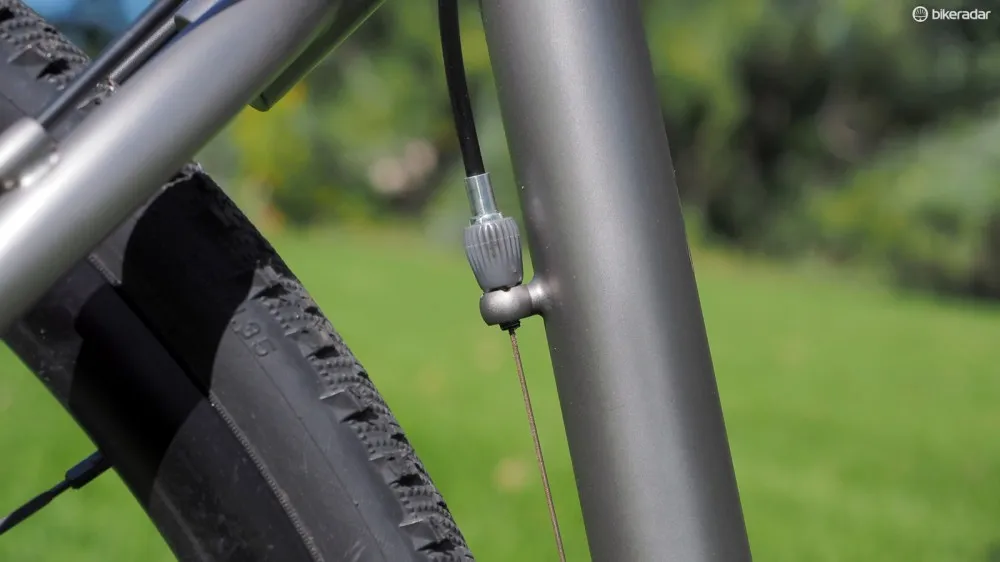
A barrel adjuster is conveniently built right into the housing stop for the front derailleur
Save for the oversized 44mm-diameter head tube (a necessity for tapered steerers), frame construction and features are decidedly traditional although there are a number of distinctive little touches.
For example, the cable routing is external throughout with classic 12 o'clock positioning on the top tube but the subtly barrel-shaped rear brake housing guides are built with full-length hoses in mind should you build your Routt up with a hydraulic setup. For the front derailleur, there's a barrel adjuster integrated into the housing stop on the back of the seat tube.
Meanwhile, the rear dropouts are built around standard quick-release hubs but their hooded shape leaves heaps of weld area for the adjoining seatstays and chainstays without requiring any radical pinching or machining of the ends. Down below is a standard threaded bottom bracket shell (no creaks!) but Moots uses a more modern 44mm diameter head tube to accommodate a tapered steerer tube.
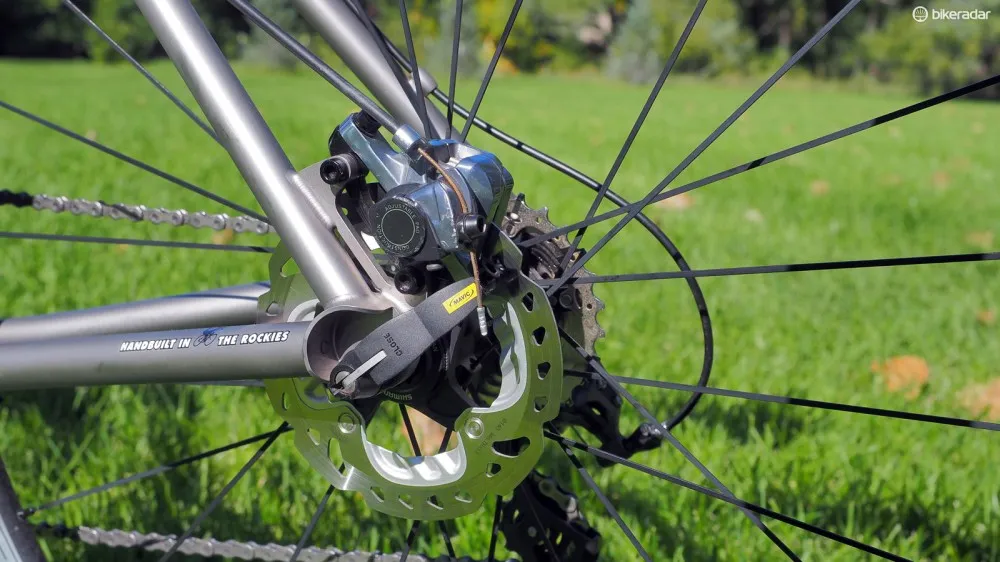
As always with Moots, the welds are beautiful
Then there are the more hidden signs of quality. Threads are perfectly cut so that the bottom bracket bearing cups smoothly glide in by hand; headset cups press in firmly and squarely thanks to the careful reaming of the head tube; and the dropouts are milled so precisely that the quick-release rear wheel relocates consistently enough to keep the rotor from rubbing.
Even the seatpost can be slid in and out with nary a hint of scarring while the breather holes in the stays (which are required during the welding process) are sealed post-production to keep water out of the frame.
If there's any source of disappointment, it's in the middling frame weight. Our 52cm sample hits the scales at 1,506g, which is more than a pound heavier than many composite competitors. That said, buyers who are looking more at the long-term game will likely be okay with the compromise.
Equipment: Build to taste
Moots doesn't sell complete bikes; only frames. Our tester arrived with the company's "suggested build kit", which includes an Enve Composites Cross Disc carbon fork, Shimano Ultegra mechanical drivetrain, Shimano BR-CX77 mechanical disc brakes, Shimano WH-RX31 wheels wrapped with Schwalbe Sammy Slick tires, a fi'zi:k Cyrano R3 bar and Aliante k:ium saddle, a Chris King headset and the company's own welded titanium stem and seatpost.
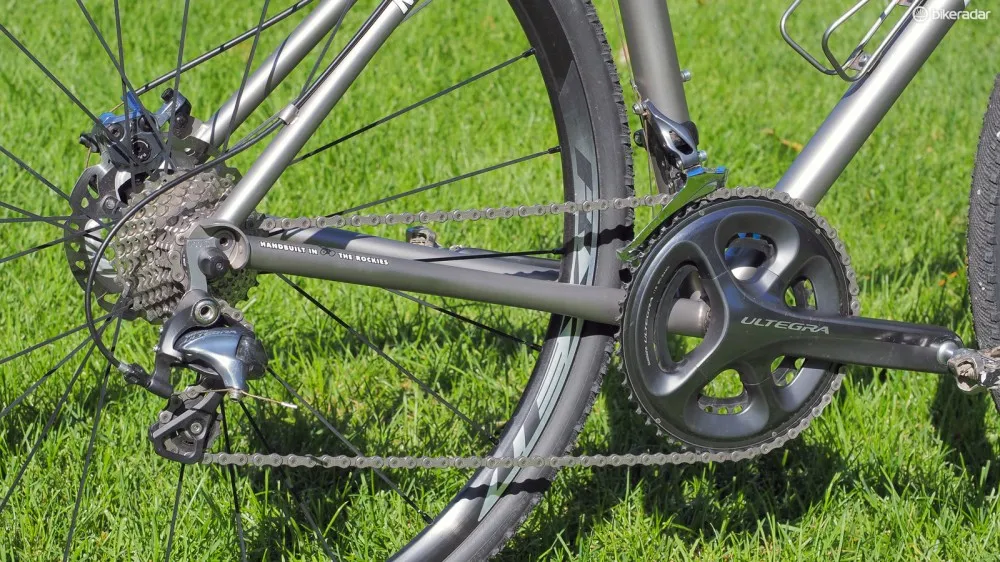
We had no complaints with our test sample's Shimano Ultegra drivetrain
Overall, we found the build to reflect the Routt's newly versatile demeanor – but again, only modestly suited for cyclocross.
As we've noted so many times in the past, shift performance of the Shimano Ultegra drivetrain is outstanding with reliable chain movement front and rear – even under full-power pedaling – along with generally quiet operation plus excellent lever ergonomics. Likewise, this experience with Shimano's BR-CX77 cable actuated brakes reflects prior experience with very good power and excellent control but so-so aesthetics and occasionally frustrating serviceability.
The sample finishing kit is spot-on. The fi'zi:k Aliante k:ium saddle is big and cushy without being overly spongy while the company's aluminum Cyrano R3 handlebar offers up a versatile semi-anatomic bend and reasonable drop and reach.
Meanwhile, the Moots welded titanium stem and seatpost are both not only beautiful but lightweight and functional: the former is admirably rigid when torquing hard on the bars and the latter's generous flex only adds to the frame comfort.
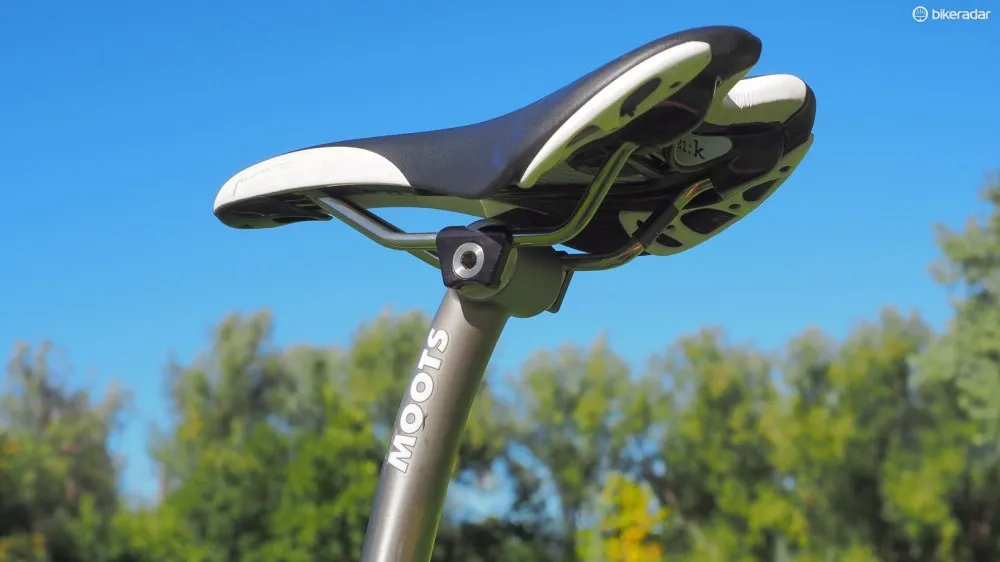
Pretty and functional
It's a bit of a shame, then, that Moots saddled our particular Routt with such disappointing rolling stock. Although the Schwalbe Sammy Slick tires are appropriately fast-rolling and reasonably versatile, the Shimano WH-RX31 aluminum clinchers are unduly heavy at more than 2,000g for the pair – and it's definitely noticeable.
As a result – and adding in the additional mass of the titanium frame – total weight for our bike as tested was a hefty 8.93kg (19.69lb) without pedals.
We ultimately swapped in a set of lighter Bontrager Affinity Elite TLR Road Disc wheels for testing, as well as an FSA SL-K carbon crank with more 'cross-friendly 46/36T chainrings and a more aggressively angled stem. This shed several hundred grams and also made the Routt more tenable for racing.
A more careful (and expensive) build could obviously drop the weight even further but even as is, it's a solid setup for the all-day exploring that the Routt is ultimately intended for.
For more information visit www.moots.com.
Specification as tested:
- Frame: Moots Routt
- Fork: Enve Composites Cross Disc
- Headset: Chris King InSet 7
- Stem: Moots titanium
- Handlebar: fi'zi:k Cyrano R3
- Tape: Zevlin
- Front brake: Shimano BR-CX77 w/ 160mm SM-RT99 rotor
- Rear brake: Shimano BR-CX77 w/ 140mm SM-RT99 rotor
- Brake levers: Shimano Ultegra STI Dual Control ST-6800
- Front derailleur: Shimano Ultegra FD-6800
- Rear derailleur: Shimano Ultegra RD-6800-SS
- Shift levers: Shimano Ultegra STI Dual Control ST-6800
- Cassette: Shimano CS-6800, 11-28T
- Chain: Shimano Ultegra CN-6800
- Crankset: Shimano Ultegra FC-6800, 50/34T
- Bottom bracket: Shimano Ultegra SM-BB6800
- Pedals: n/a
- Wheelset: Shimano WH-RX31
- Front tire: Schwalbe Sammy Slick, Performance Line, 700x35c
- Rear tire: Schwalbe Sammy Slick, Performance Line, 700x35c
- Saddle: fi'zi:k Aliante k:ium
- Seatpost: Moots titanium
